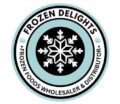Introduction
Frozen food has become an essential part of modern kitchens, offering convenience, long shelf life, and a variety of ready-to-fry options. Whether you’re preparing a quick snack or hosting a gathering, frozen ready-to-fry items provide a reliable and delicious alternative to fresh preparations. In this guide, we explore the benefits of frozen food, proper storage techniques, and tips to get the most out of your ready-to-fry frozen meals.

Benefits of Ready-to-Fry Frozen Food
1. Quick and Easy Preparation
Ready-to-fry foods saves time in the kitchen. With minimal effort, you can enjoy crispy and delicious snacks in minutes.
2. Consistent Taste and Quality
It maintains consistent taste and texture, ensuring that every batch is as good as the last.
3. Longer Shelf Life
Frozen ready-to-fry items last significantly longer than fresh snacks, allowing you to stock up without worrying about spoilage.
4. Cost-Effective
Buying frozen items in bulk is often more economical than preparing from scratch, reducing both time and ingredient costs.
Proper Storage Techniques for Frozen Food
1. Keep Your Freezer at the Right Temperature
Maintaining a freezer temperature of -18°C (0°F) or lower ensures that your frozen food stays fresh and safe to eat.
2. Use Airtight Packaging
To prevent freezer burn, store frozen items in airtight packaging or vacuum-sealed bags. This preserves texture and flavor.
3. Label and Organize
Mark packaging with the date of freezing to keep track of storage time and avoid consuming expired products.
4. Follow Proper Thawing Methods
Thaw frozen items in the refrigerator or deep fry directly as per instructions rather than leaving it at room temperature to prevent bacterial growth.
5. Avoid Frequent Temperature Fluctuations
Opening the freezer frequently or allowing frozen food to partially thaw and refreeze can degrade quality and taste over time. Try to keep the freezer door closed as much as possible.

Tips for Making the Most of Ready-to-Fry Frozen Food
1. Preheat Your Oil Properly
Ensuring the oil is at the right temperature (typically 175-190°C) results in a crispy, golden texture.
2. Avoid Overcrowding the Fryer
Frying too many pieces at once lowers the oil temperature, leading to soggy and unevenly cooked food.
3. Try Air Frying for a Healthier Alternative
Many ready-to-fry frozen foods can be cooked in an air fryer, reducing oil consumption while maintaining crispiness.
4. Pair with Dips and Sauces
Enhance the flavor of your frozen food by serving it with a variety of dips and sauces.
Popular Ready-to-Fry Frozen Food Options
1. French Fries and Wedges
A timeless favorite, frozen fries and potato wedges are crispy, golden, and perfect as a side dish or snack.
2. Mozzarella Sticks
Crispy on the outside and cheesy on the inside, mozzarella sticks are an excellent appetizer option.
3. Chicken Nuggets and Tenders
A go-to snack for both kids and adults, frozen chicken nuggets and tenders are flavorful and easy to prepare.
4. Spring Rolls and Samosas
Perfect for parties or tea-time snacks, frozen spring rolls and samosas come with a variety of fillings, including vegetables, chicken, and paneer.
5. Fish Fingers and Prawns
For seafood lovers, frozen fish fingers and prawns are a great way to enjoy restaurant-style crispy seafood at home.
6. Paneer and Cheese Poppers
These bite-sized delights are filled with cheese or paneer and offer a rich and creamy taste with a crunchy coating.
Conclusion
Frozen ready-to-fry food is a fantastic solution for quick, delicious, and hassle-free meals. By following proper storage and cooking techniques, you can make the most of your frozen snacks without compromising quality or taste. Whether you’re entertaining guests or enjoying a quick bite, frozen food remains a staple in modern kitchens. Start incorporating frozen ready-to-fry items into your routine and enjoy their convenience and taste today!

